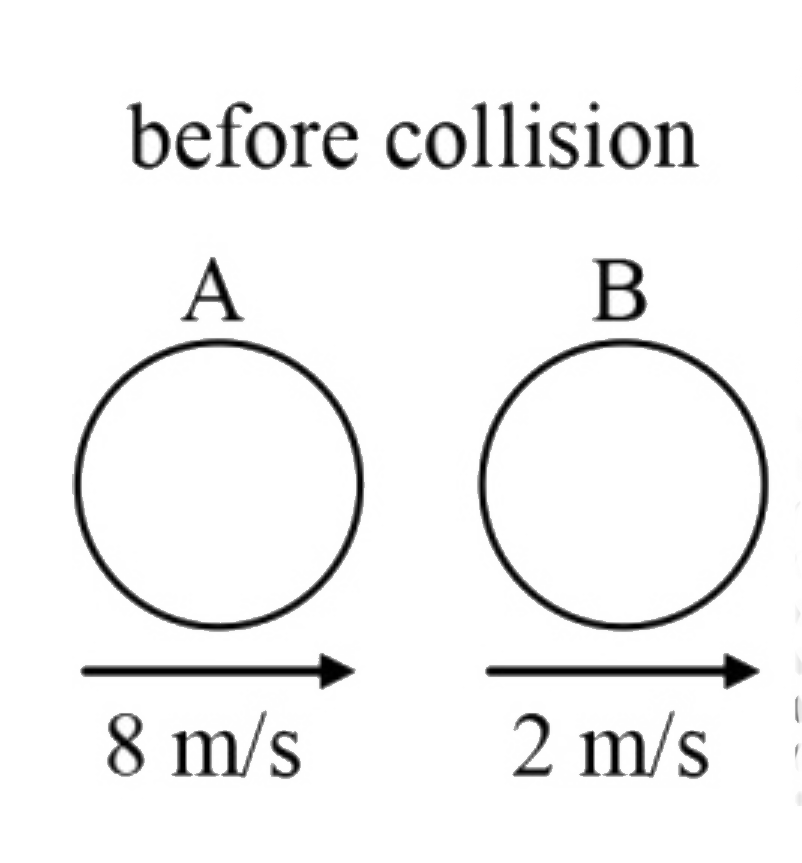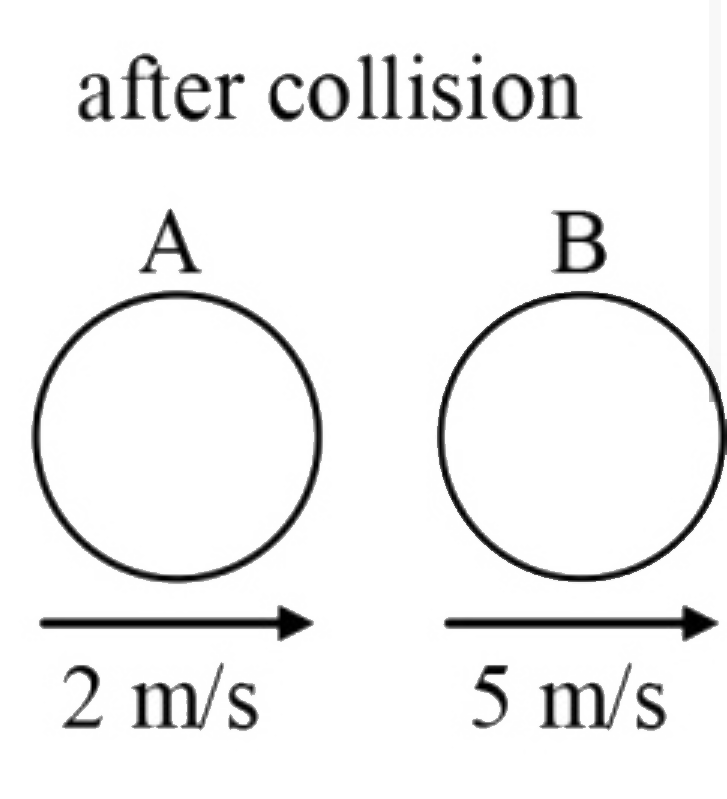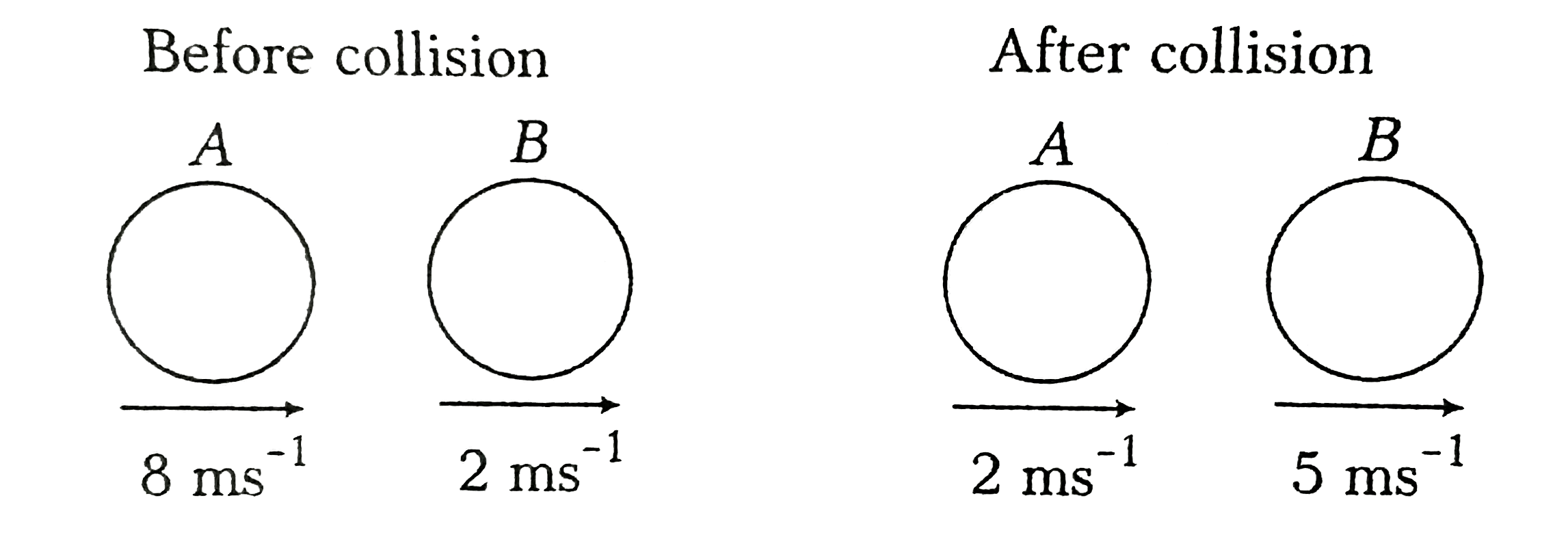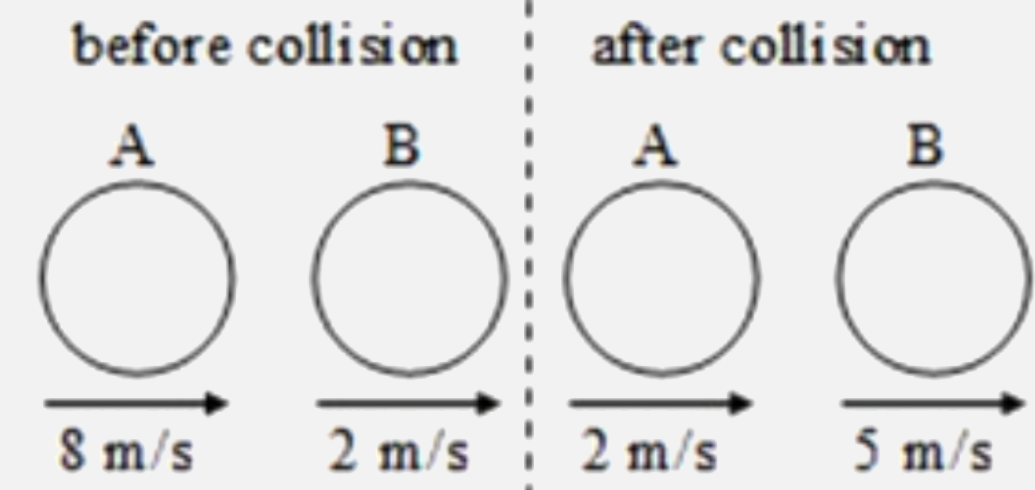In a collision between two solid spheres, velocity of separation along the line of impact (assume no external forces act on the system of two spheres during impact) :
cannot be greater than velocity of approach
cannot be less than velocity of approach
cannot be equal to velocity of approach
none of these
The correct Answer is:A
Step by step video, text & image solution for In a collision between two solid spheres, velocity of separation along the line of impact (assume no external forces act on the system of two spheres during impact) : by Physics experts to help you in doubts & scoring excellent marks in Class 12 exams.
Updated on:21/07/2023Topper's Solved these Questions
- CENTRE OF MASSBOOK - MOTIONCHAPTER - CENTRE OF MASSEXERCISE - Exercise - 2 (Level-I)
40 Videos
- CENTRE OF MASSBOOK - MOTIONCHAPTER - CENTRE OF MASSEXERCISE - Exercise - 2 (Level-II)
28 Videos
- CENTRE OF MASSBOOK - MOTIONCHAPTER - CENTRE OF MASSEXERCISE - Exercise - 4 Level-II
20 Videos
- Capacitance BOOK - MOTIONCHAPTER - Capacitance EXERCISE - EXERCISE -4 LEVEL II
19 Videos
- CIRCULAR MOTIONBOOK - MOTIONCHAPTER - CIRCULAR MOTIONEXERCISE - EXERCISE - 4
16 Videos
Similar Questions
The two diagrams show the situation before and after a collision between two spheres A and B of equal radii moving along the same straight line on a smooth horizontal surface. The coefficient of restitution e is


View SolutionThe two diagrams show the situations befoer and after a collision between two spheres A and B of equal radii moving along the same straight line on a smooth horizontal surface. The coefficient of restitution e is lt brgt

View Solution
Knowledge Check
Statement-1 : In a perfectly inelastic collision between two spheres, velocity of both spheres just after the collision are not always equal.
Statement-2 : For two spheres undergoing collision, component of velocities of both spheres along line of impact just after the collision will be equal if the collision is perfectly inelastic. The component of velocity of each sphere perpendicular to line of impact remains unchanged due to the impact.AStatement-1 is True, Statement-2 is True,
Statement-2 is a correct explanation for Statement-1.BStatement-1 is True, Statement-2 is True,
Statement-2 is NOT a correct explanation for Statement-2CStatement-1 is True, Statement-2 is FalseDStatement-1 is False, Statement-2 is FalseStatement I: If a sphere of mass mmoving with speed u undergoes a perfectly elastic head-on collision with another sphere of heavier mass M at rest (M>m), then direction of velocity of sphere of mass m is reversed due to collision (no external force acts on system of two spheres).
Statement II: During a collision of spheres of unequal masses, the heavier mass exerts more force on the lighter mass in comparison to the force which lighter mass exerts on the heavier one,ABoth assertion and reason are true and reason is the correct explanation of assertion.BBoth assertion and reason are true but reason is not the correct explanation of assertion.CAssertion is true and reason is false.DAssertion is false and reason is true.Which of the following statement is true concening the elastic collision of two object (It is given that no net external force acts on the system of two object and the do not exen force on each other exept during collision)
ANo net work on any of the two objects since there is no external on the system of given two objectBThe net work done by the first object on the second is equal in the net work done by the second on the firstCThe net work done by the first object on the second is execity the opposite of the net work done by the second on the fistDNo net work done on the system depends on the angle of colision
The two diagrams show the situation before and after a collision between two spheres A and B of equal radii moving along the same straight line on a smooth horizontal surface. The coefficient of restitution e is

View SolutionStatement 1: Two spheres undergo a perfectly elastic collision. The kinetic energy of system of both spheres is always constant. [There is no external force on system of both spheres]. Statement 2: If net external force on a system is zero, the velocity of centre of mass remains constant.
View SolutionCollision is a physical process in which two or more objects, either particle masses or rigid bodies, experience very high force of interaction for a very small duration. It is not essential for the objects to physically touch each other for collision to occur. Irrespective of the nature of interactive force and the nature of colliding bodies, Newton's second law holds good on the system. Hence, momentum of the system before and after the collision remains conserved if no appreciable external force acts on the system during collision.
The amount of energy loss during collision, if at all, is indeed dependent on the nature of colliding objects. The energy loss is observed to be maximum when objects stick together after collision. The terminology is to define collision as 'elastic' if no energy loss takes place and to define collision as 'plastic' for maximum energy loss. The behaviour of system after collision depends on the position of colliding objects as well. A unidirectional motion of colliding objects before collision can turn into two dimensional after collision if the line joining the centre of mass of the two colliding objects is not parallel to the direction of velocity of each particle before collision. Such type of collision is referred to as oblique collision which may be either two or three dimensional.
For which of the following collisions, the external force acting on the system during collision is not appreciable as mentioned in paragraph 1.
View SolutionCollision is a physical process in which two or more objects, either particle masses or rigid bodies, experience very high force of interaction for a very small duration. It is not essential for the objects to physically touch each other for collision to occur. Irrespective of the nature of interactive force and the nature of colliding bodies, Newton's second law holds good on the system. Hence, momentum of the system before and after the collision remains conserved if no appreciable external force acts on the system during collision.
The amount of energy loss during collision, if at all, is indeed dependent on the nature of colliding objects. The energy loss is observed to be maximum when objects stick together after collision. The terminology is to define collision as 'elastic' if no energy loss takes place and to define collision as 'plastic' for maximum energy loss. The behaviour of system after collision depends on the position of colliding objects as well. A unidirectional motion of colliding objects before collision can turn into two dimensional after collision if the line joining the centre of mass of the two colliding objects is not parallel to the direction of velocity of each particle before collision. Such type of collision is referred to as oblique collision which may be either two or three dimensional.
For which of the following collisions, the external force acting on the system during collision is not appreciable as mentioned in paragraph 1.
View SolutionTwo small spheres of equal mass, and heading towards each other with equal speeds, undergo a head on collision ( external force acts on system of two spheres ). Then which of the following statement is correct ?
View Solution
